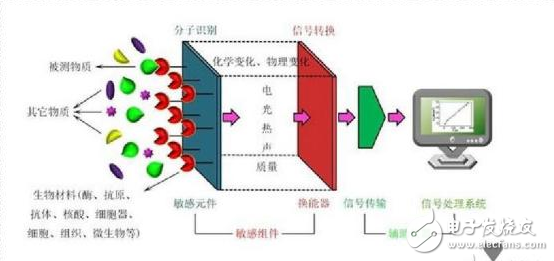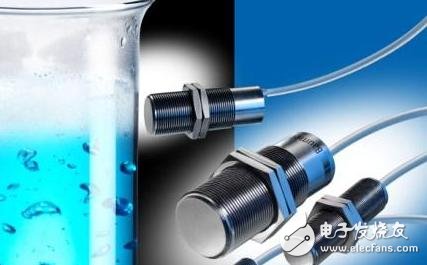A kind of medical sensor used to sense various kinds of biological information and convert it into an easy-to-handle electrical signal device plays an important role in the development of medical instruments and medical experiments. It is the first link of medical measuring instruments, and it is a link between medical instruments and the human body, and it is also a key link. If there is no medical sensor to measure the original parameters accurately and reliably, then the subsequent steps will not get the correct results. In addition, medical sensors provide specific information for medical diagnostic instruments, which often determine the measurement principle and structural design of medical instruments.
Development of medical sensors
Sensors occupy an important position in medical research and clinical diagnosis. With the advancement of engineering technology and medical science, biomedical sensors will also develop rapidly.
Sensor technology has two development directions, one is the development of the sensor itself, and the other is the research combined with computer technology. There are two branches in the development of the sensor itself. One is the basic research on sensors, which is the new technology and new principles needed to develop sensors. The other is the development of new sensor products, which is urgently needed for market research and production. product. Basic research focuses on new materials and ultra-fine processing technologies. New product development focuses on the application of optical technology, microelectronic packaging technology and disposable chips.
At present, the most popular research topics include the application of multifunctional precision ceramic materials in sensors, the utilization of biofunctional substances in sensor development, and the research of micro-machining technology to manufacture ultra-small sensors.
In addition, the development of chemical sensors and biosensors is another trend in the development of sensor technology, especially in the field of biomedicine, which is conducive to the promotion of basic medical research, clinical diagnosis and environmental medicine.
Biofunctional substances and sensors
The study of biofunctional substances (also known as molecular recognition substances) in the study of new materials is attracting attention in the development of biomimetic sensors. The existing sensors cannot be said to partially replace the sensory function of the living body, and it is only a signal converter that utilizes physical or chemical phenomena. There are very few sensors that really replace the sensory function of the organism. The material membrane in the organism responds to external stimuli. The biofilm is about 6~10um thick and contains many receptor cells (receptors). It is a phospholipid bilayer membrane with proteins embedded like tiles. Above. When external stimuli are added to the biofilm, the membrane potential changes, and the nerve connected to the accommodating cell sends a pulse to the nerve center. When the external stimuli are light, the membrane potential changes due to the action of the photosensitive protein; if the external stimuli are chemistry The substance changes in the membrane potential due to the adhesion of chemicals to the membrane. The membrane of the substance in the imitation organism has been developed to form a complex nature by artificially functional membrane (immune membrane) which changes the membrane potential by antigen-antibody binding and the selection of the biologically-acceptable substance immobilized on the membrane to absorb the substance to be tested. Membrane (enzyme membrane). People are using this biofunctional membrane research to develop a variety of new sensors, biosensors, which laid the foundation for the development of biosensors. This sensor has been used in medicine to measure blood sugar, lactic acid, immunoglobulin G (IgG), alpha-fetoprotein (AFP), etc., and is also used to measure deoxyribonucleic acid (DNA), ribonucleic acid (RNA) and neurotransmitters. Wait. It has been proposed to use an array electrode or a composite enzyme electrode to simultaneously recognize a plurality of chemicals to achieve a biosensor comparable to five human sensations.
Practical research on medical sensors
(1) Real-time measurement of body fluid components : such as real-time measurement techniques of various ions, gases, etc. in the blood.
(2) Application of multi-information ultra-small sensor arrays: such as the use of catheter probes to measure a variety of information on cardiac function from the inside of the heart.
(3) Research and development of more advanced anthropometric techniques using optical fibers and semiconductor micro-optical devices.
(4) Research and development of new technologies for the measurement of molecular levels using biochemical reactions.
The task of the managed switch is to keep all network resources in good condition. The network management switch product provides a variety of network management methods based on the terminal control port (Console), based on the Web page, and supports Telnet to remotely log in to the network. Therefore, network administrators can perform local or remote real-time monitoring of the switch's working status and network running status, and manage the working status and working mode of all switch ports in a global view.
The switch is the most important network connection device of the LAN, and the management of the LAN mostly involves the management of the switch.
The network management switch supports the SNMP protocol. The SNMP protocol consists of a set of simple network communication specifications, which can complete all basic network management tasks, has a small demand for network resources, and has some security mechanisms. The working mechanism of the SNMP protocol is very simple, mainly through various types of messages, namely PDU (protocol data unit) to achieve the exchange of network information.
There are also managed switches that provide policy-based QoS (Quality of service). Policy refers to the rules that control the behavior of the switch. The network administrator uses the policy to allocate bandwidth and priority for application flows and control network access. The focus is on the bandwidth management strategy required by the service level agreement and the way of publishing the policy to the switch. Multifunction light emitting diodes (LEDs) used to indicate port status, half duplex/full duplex and 10BaseT/100BaseT at each port of the switch, and switch status LEDs that indicate system, redundant power supply (RPS) and bandwidth utilization A comprehensive and convenient visual management system has been formed.
1U Industrial Switch,L3 Ethernet Switches,24 Port Managed Switch,Managed Industrial Switches
Shenzhen Scodeno Technology Co.,Ltd , https://www.scodenonet.com
